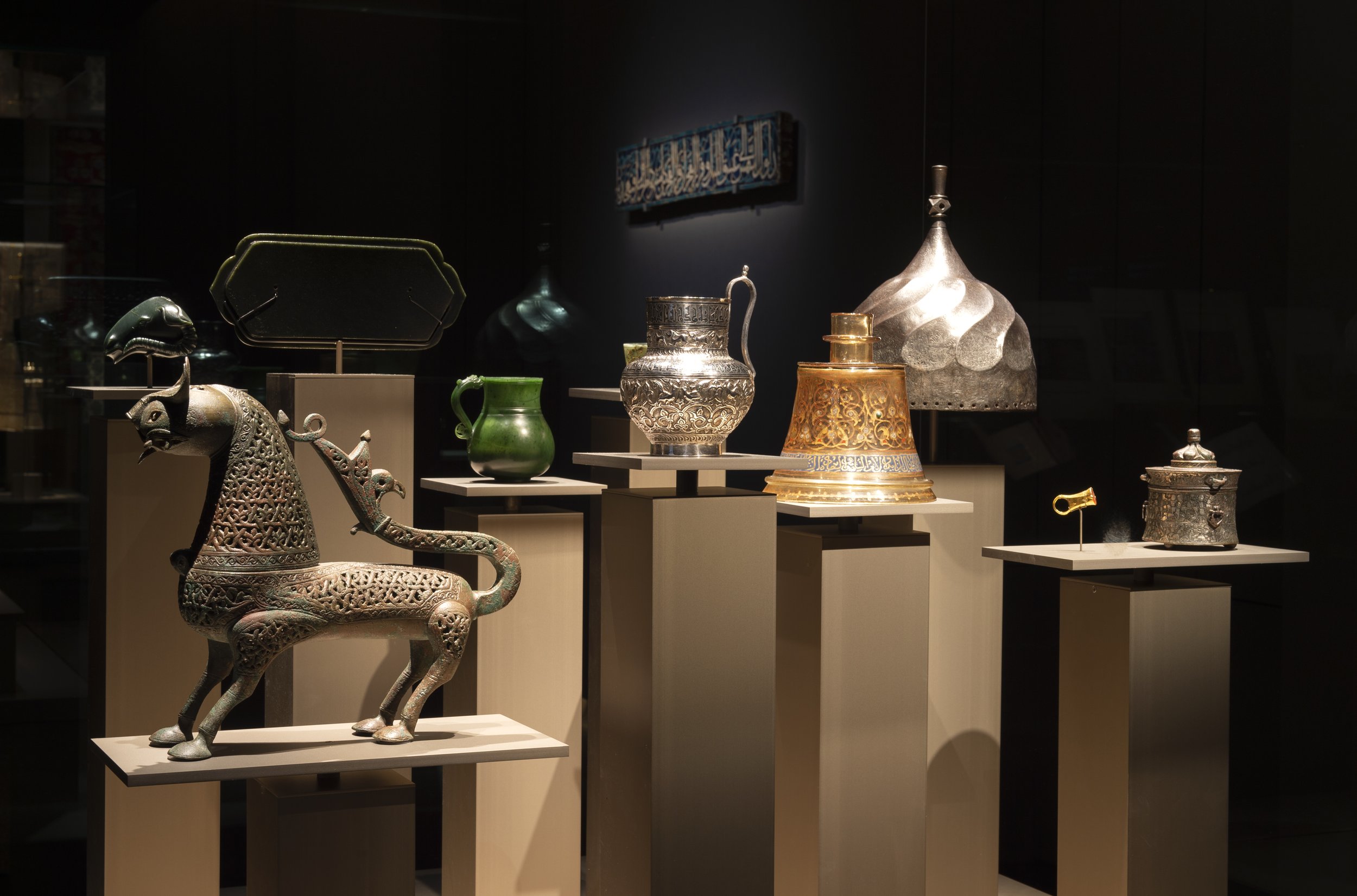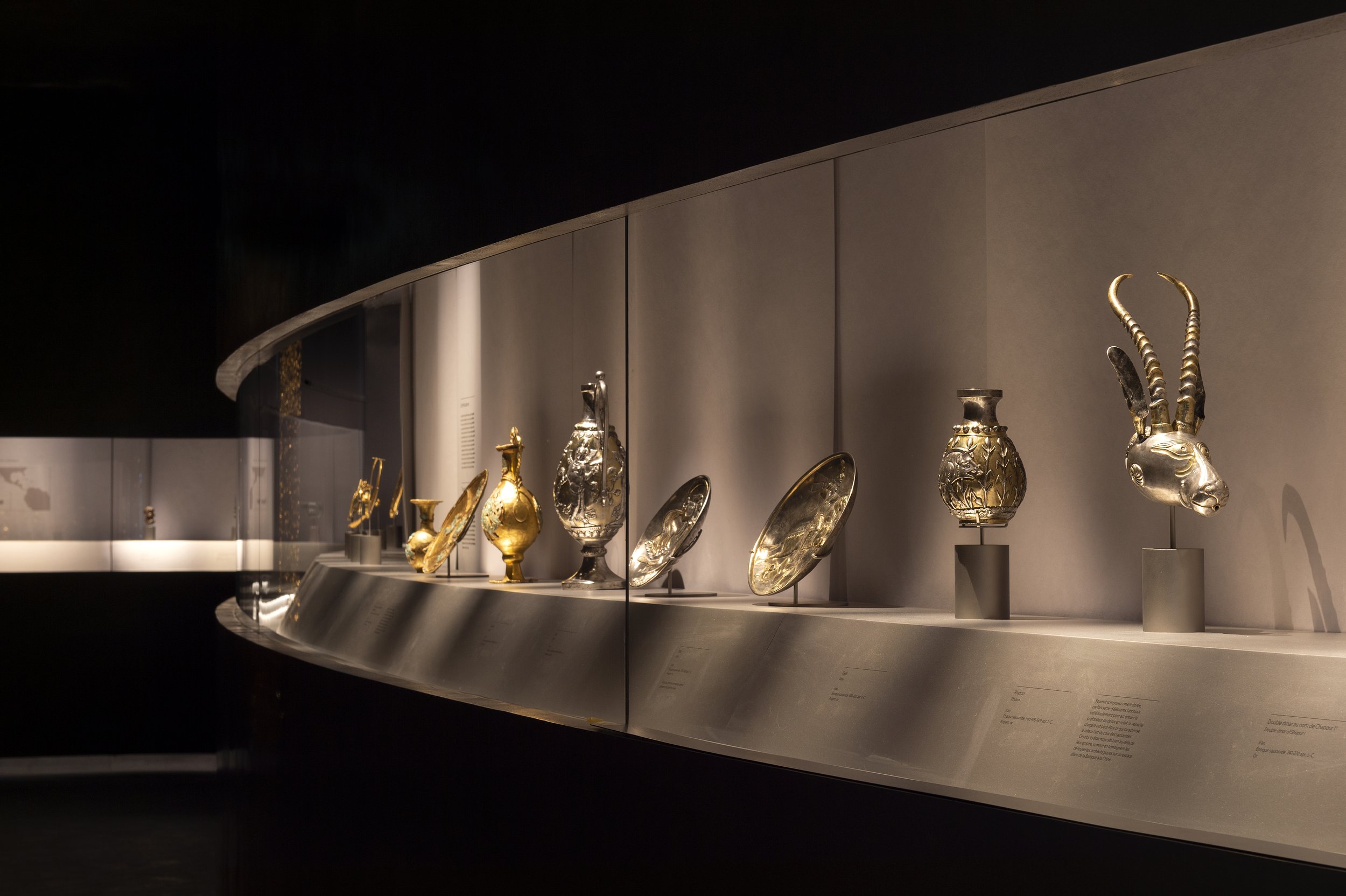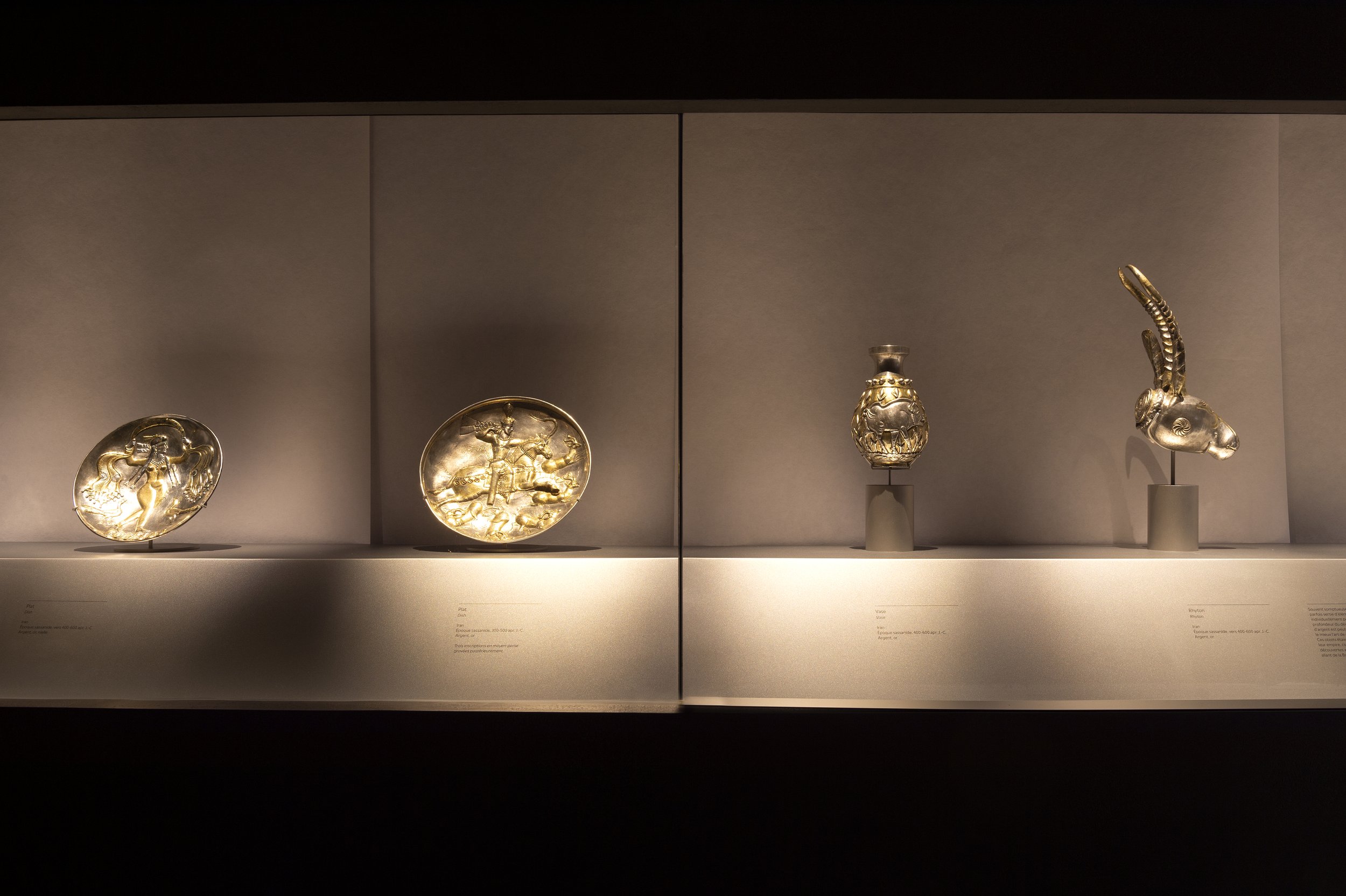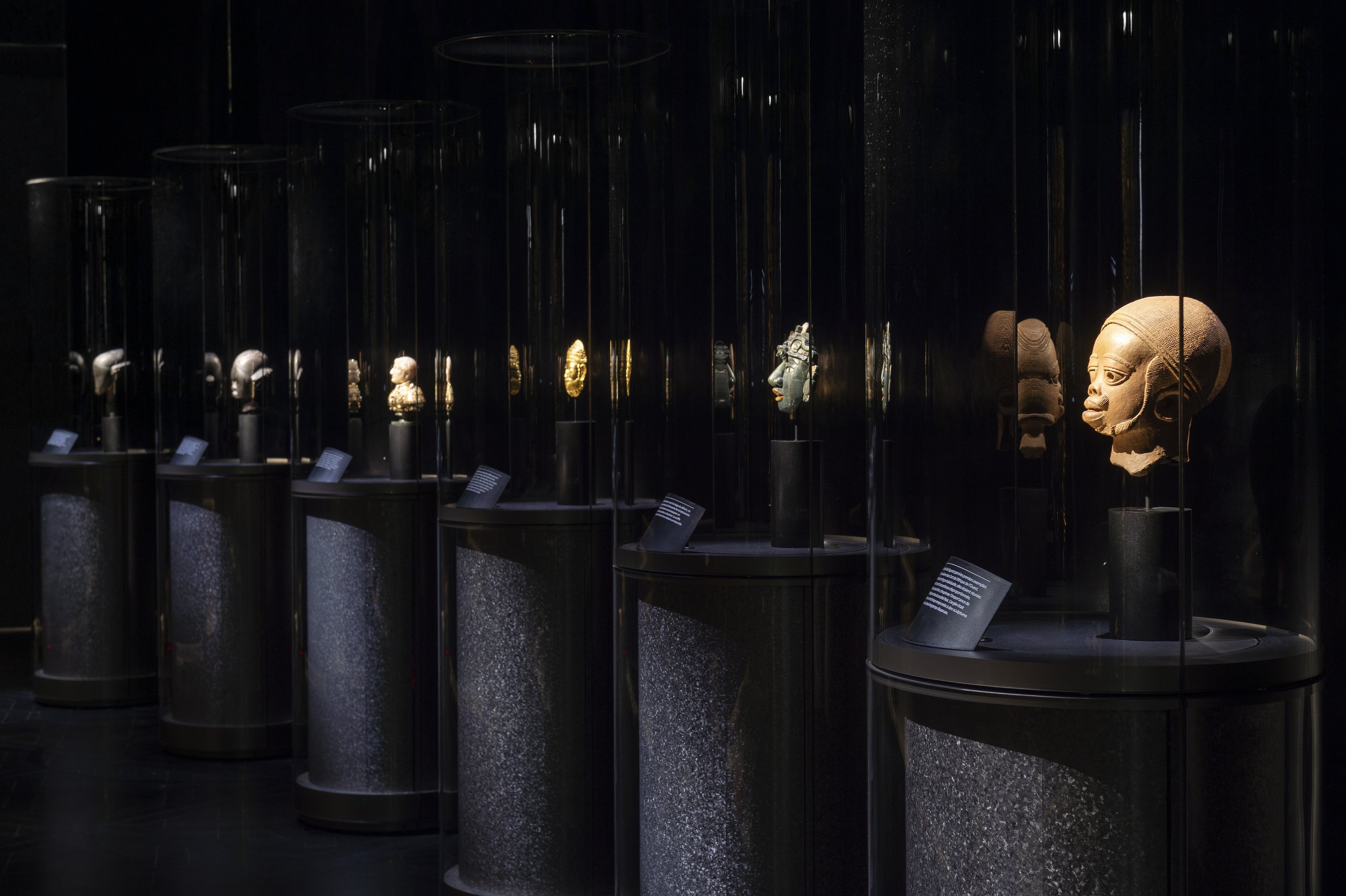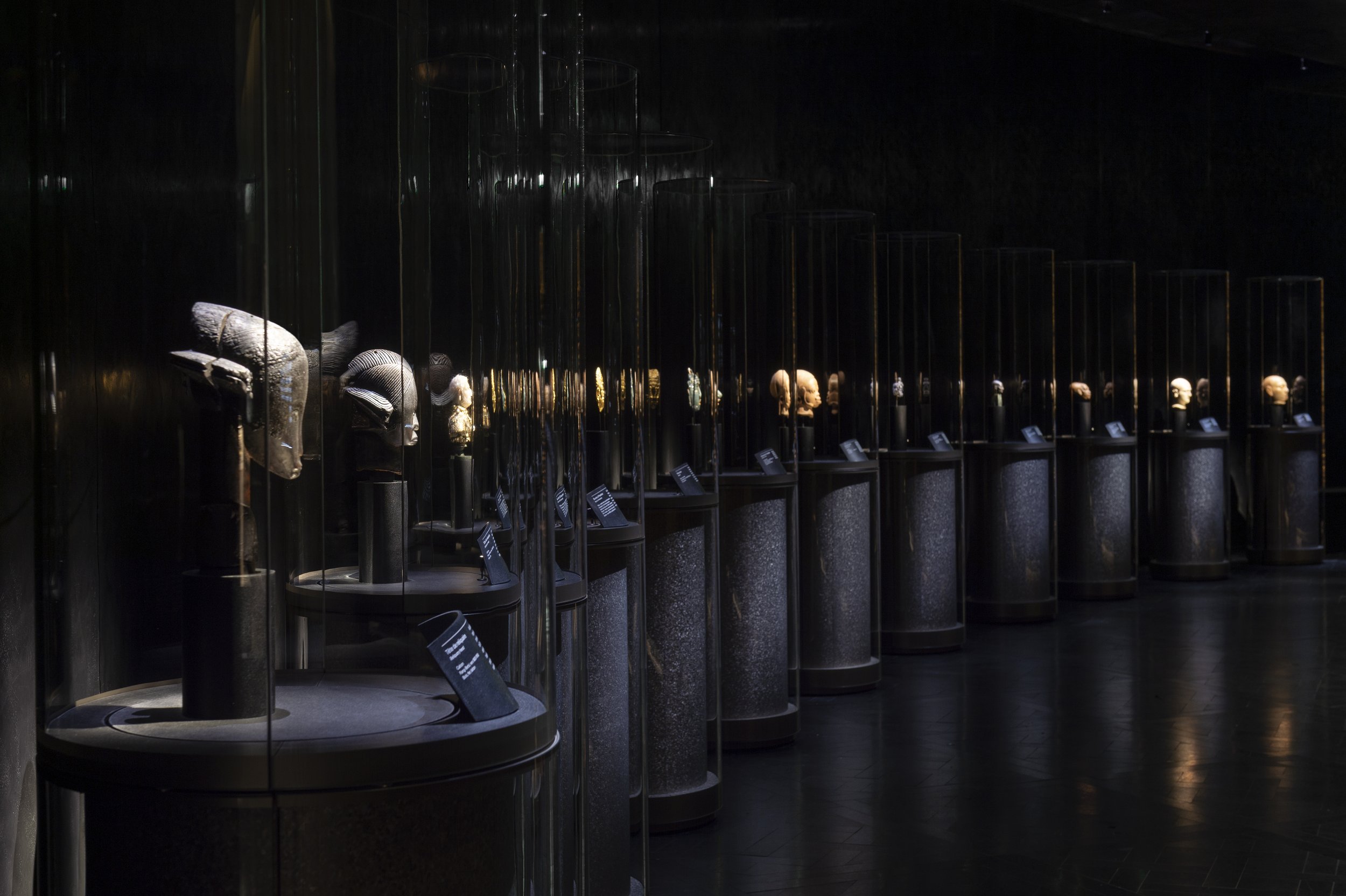Treasures of the Al Thani Collection at Hôtel de la Marine
Treasures of the Al Thani Collection
November 18, 2021 —
The Centre des monuments nationaux and The Al Thani Collection Foundation are pleased to announce the opening of the museum space dedicated to showing artworks from The Al Thani Collection at the Hôtel de la Marine on 18th November 2021. The exhibition – Treasures of the Al Thani Collection – will showcase a rich diversity of approximately 120 artworks drawn from across the Collection, bringing together exceptional works of art from antiquity to the 19th century. Celebrating the unifying force of art across cultures, it will juxtapose superlative works of art from different civilizations, sharing with the public high points of creative expression across periods and geographies.
The exhibition will take place across four galleries in a space which formerly served as the tapestry storerooms for the French Royal collections. The purpose-built museum space has been designed by ATTA, a Paris-based architecture practice led by Tsuyoshi Tane. The opening of the museum space at the Hôtel de la Marine echoes the building’s early history when exhibition rooms were created to present treasures from the French royal collections. Under Louis XVI, these could be visited by the wider public one Tuesday per month between April and November; as such, the Garde-Meuble de la Couronne became the first museum to be opened in Paris.
A Window on World Civilizations
The first gallery will show a selection of seven masterpieces reflecting high points of human creative endeavor across civilizations, representing the breadth of the Collection. Created on four continents and over nearly five millennia, they are nevertheless connected by sensibilities of workmanship, the careful deployment of privileged materials, and their use of objects as vehicles for symbolism. Considered together, these works of art, diverse in their origin and form, provide a window into the values and beliefs of great civilizations. Highlights include the ‘Schuster Stargazer’, one of the finest Kiliya idols preserved from Prehistory (c. 3300-2500 B.C.); an Egyptian red jasper head of a pharaoh from the Eighteenth Dynasty, a high point of ancient Egyptian civilization (1475-1292 BC); a rare Han Chinese sculpture of a bear (206 BC-AD 25); and a Maya mosaic pendant mask, a rare complete survival of its type (200–600 AD).
Faces Through the Ages
The second gallery enlarges on this idea with an exhibition of eleven sculptural faces, fashioned in different periods and places, each united by a common theme: that of representing the human image, whether in stylized expressions of authority or in realistic depictions of character. Executed in diverse materials, the objects in this section feature a variety of representations of the human face drawn from across periods and geographies, each capable of conveying something of the essence of a culture’s identity and spiritual beliefs. These range from portraits of individuals, through to generic and idealized representations and depictions of gods in human form. Highlights include a Neo-Sumerian head of a man carved from quartzite circa 2050 BC which relates to similar examples depicting Gudea, ruler of the state of Lagash; a Fang- Betsi reliquary head from Gabon (circa 1700–1850) formerly owned by Joseph Brummer (1883–1947), the influential art collector and dealer who championed African art and who played a decisive role in establishing the careers of Henri ‘Le Douanier’ Rousseau, Amedeo Modigliani, and Constantin Brancusi; and a medieval bust of Emperor Hadrian carved from chalcedony circa 1240 and most likely from the court workshop of Frederick II Hohenstaufen who was crowned Holy Roman Emperor in 1220. The bust has been remounted on a silver-gilt bust in the late 16th century, the splendor of which is a testament to the value attached to this particular piece.
An Ancient Treasury
This gallery is an intimate space devoted to displays of ancient works of art focused on precious materials, with skillfully crafted hardstone objects, vessels in gold and silver, and jewelry and adornment. The opulent materials shown here convey the sense of an ancient treasury: a secure storeroom belonging to king, nobleman, temple, or community where precious items of high value could be kept in safety. Treasuries were primarily assembled through taxation, victories in battle, and dynastic marriages. Highlights include a gold cup from Marlik, north-west Iran (1100–900 BC) which is raised from a single sheet of gold with a flared rim and rounded edge at the foot, and which shows four stags, depicted in profile, proceeding to the right; an agate cup fragment from the Eastern Mediterranean, possible Alexandria (100 BC-AD 100) with an image of Eros riding a panther; a silver and gold Sasanian dish (300–500 AD) with a remarkable weight of 1.011 kg which depicts a royal hunting scene with Shapur II, recognizable by his official crown, portrayed in the midst of action, drawing his bow to fell yet another animal; and a Greek clasp from circa 300 BC in the form of a Herakles knot, the four ends capped by roaring lions’ heads. It concludes with a focus on a highlighted group of treasures from the Collection, which is set to change on a regular basis. The opening exhibition will feature important stone sculpture from the Olmec civilization. The Olmec, who originated in Mexico’s tropical Gulf Coast region before 1200 BC, created a powerful artistic style that represented their understanding of the cosmos and humankind’s place within it. Highlights include a depiction of squatting dwarf, a common motif in Mesoamerican art, dating from circa 900–600 BC.
Masterpieces from Islamic Lands
Conceived to accommodate temporary exhibitions, this gallery will open with a display of work of art from Islamic lands, from the Umayyad Caliphate to the Mughal Empire, showcasing manuscripts, metalwork, textiles, ceramics, glass, and jewelry. The selection of works of art reflects this rich and diverse heritage, bringing together objects made both for courtly use and recreation as well as for sacred purposes, from across the Muslim world. A leading highlight is the celebrated “Wine Cup of Emperor Jahangir” (dated AH 1016 (AD 1607-8), the earliest dated jade artefact that can be linked without doubt to any Mughal emperor. Other highlights include a folio from the Blue Qur’an, one of the best known and most striking manuscripts of the Qur’an from the early medieval Islamic world, whose origins have been debated by scholars for over a century with suggestions ranging from the late 8th to 10th century, from Abbasid Baghdad to Fatimid North Africa and Umayyad Cordoba; a robe woven from colored silk, with cotton and fur, made in Iran or Central Asia circa 1020–1160; a 17th-century painting by the noted Mughal artist Govardhan from the celebrated ‘Saint Petersburg album’ depicting Prince Murad Bakhsh with holy men and attendants; and a striking Iznik dish (circa 1585-90) formerly in the collection of Edouard Aynard who helped to establish the important Islamic collection of the Musée des Beaux Arts in his hometown of Lyon.
Looking Ahead
The opening of the museum space dedicated to The Al Thani Collection presents many opportunities, not least the possibility of showing at the Hôtel de la Marine works of art from partner institutions around the world. To that end, one of the galleries will host two themed temporary exhibitions per year, addressing subjects which will benefit from new scholarship and which promote cultural exchange. Further details of the exhibition program will be announced in due course.
Exhibition Preview

